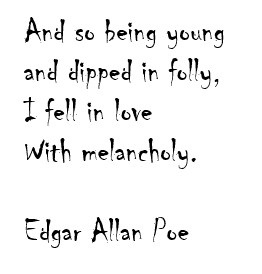
by Richard Subber | Jan 19, 2021 | Human Nature, Theater and play reviews
a first-class bad guy…
Movie review:
The Wind and the Lion (1975)
Candice Bergen as Mrs. Eden Pedecaris.
Sean Connery as Mulay Achmed Mohammed el-Raisuli, Lord of the Rif and Sultan to the Berbers.
In real life he was Mulai Ahmed er Raisuni (Raisuli) (1871-1925), a Sherif and Lord of the Rif in Morocco, a tribal leader and brigand, “the last of the Barbary pirates.”
The Wind and the Lion is a dramatic interpretation of a real incident in Morocco in 1904. The real Raisuli kidnapped an American, Ion “Jon” Hanford Perdicaris (1840-1925) and his stepson, and held the two for ransom. President Teddy Roosevelt sent U. S. marines to rescue the men. Ultimately, the government of Morocco paid the ransom and the men were released.
The movie is wonderfully dashing, and the brutal details are romantically minimized. The captive American, Candice Bergen, doesn’t quite fall in love with Sean Connery, but it seems to be a close call.
Connery, with all of his moustaches and flowing robes, is a first class bad-guy hero, and he has a good heart. He’s happy to get his money, but he’s sorry to say goodbye to Mrs. Pedecaris.
In the final scene, the Raisuli and his lieutenant, the Sherif of Wazan, are silhouetted on a high beach against the setting sun, and the Sherif plaintively declares “Great Raisuli, we have lost everything. All is drifting on the wind as you said. We have lost everything.”
Raisuli revives the heart throbs: “Sherif, is there not one thing in your life that is worth losing everything for?”
* * * * * *
Movie review. Copyright © Richard Carl Subber 2021 All rights reserved.
Book review: The Proud Tower
…a lot more than a history book…
by Barbara Tuchman
–
Seeing far: Selected poems with 47 free verse and haiku poems,
and the rest of my poetry books are for sale on Amazon (paperback and Kindle)
and free in Kindle Unlimited, search Amazon for “Richard Carl Subber”
* * * * * *

by Richard Subber | Jan 4, 2021 | Book reviews, Books, Human Nature
…a little more time in childhood…
Book review:
Girl With A Pearl Earring
by Tracy Chevalier
New York: PLUME, The Penguin Group, 1999
Girl with a Pearl Earring is a slim offering of compelling historical fiction about Johannes Vermeer’s enigmatic portrait of an unknown young girl, circa 1665.
It’s a breathtaking, tantalizing love story…tantalizing because Vermeer and the maid, Griet, almost embrace their passion, each stepping over the line without transgression, but not without hurt.
Vermeer, the worldly one, the master in a house filled with the baleful women of his family, tempted to the edge of the precipice…
Griet, the child innocent, heedless of her woman’s heat, trespassing unaware and ever nearer to the mystery that she barely understands in the beginning…
She becomes the girl with a pearl earring. She feels the lush weight of the earring, his fingertip sears her skin, she inclines toward his touch, trembles with a disembodied, virginal start of pain…
She sits for him.
He trembles—a long moment—with the rush of desire, masters it, and steps back to his easel, granting her a little more time in the childhood she is leaving behind, giving her a peace that will become a bereavement, a keening memory…
They look at each other, mute, apart, yet bound, in flagrante delicto, withering, without joy…
* * * * * *
(Freebie: the 2003 film, Girl with a Pearl Earring, is a slam dunk clone of Tracy Chevalier’s book. Colin Firth (Vermeer) and Scarlett Johansson (Griet) stepped off the pages of the book, onto the movie set. They make you wish the ending could be different.)
* * * * * *
Book review. Copyright © Richard Carl Subber 2018 All rights reserved.
Book review: The Bridges of Madison County
If you’re looking for
highly stoked eroticism
and high-rolling lives
that throw off sparks when they touch,
look elsewhere.
by Robert Waller
click here
–
In other words: Poems for your eyes and ears with 64 free verse and haiku poems,
and the rest of my poetry books are for sale on Amazon (paperback and Kindle)
and free in Kindle Unlimited, search Amazon for “Richard Carl Subber”
* * * * * *

by Richard Subber | Dec 22, 2020 | Human Nature, Reflections, Theater and play reviews, Tidbits
Guess who wasn’t coming to dinner at your house in 1967…
Well, if you grew up in a white family, it’s a pretty good bet that a handsome black guy—a doctor!—wasn’t planning on sitting down to dinner and telling you he planned to marry your daughter.
That’s the reality that was.
So, about 50 years ago, Katharine Hepburn and Spencer Tracy and Sidney Poitier and Katharine Houghton and Beah Richards and Roy Glenn got crazy in Hollywood and filmed Guess Who’s Coming to Dinner. It was a blockbuster. Houghton (daughter) and Poitier (doctor) played lovely young people who were in love, and everybody got with the program by the end of the movie, and they lived happily ever after. (There were Oscars, click here).
It’s a poignant and dramatically dynamic movie. Every character throws firecrackers at least a couple times, and everybody catches the firecrackers with high art and deftly normalized social criticism and passionate declarations about the right thing.
I’ve watched it several times. For me, it doesn’t get old. I like to live in the world with people who say “If you love somebody, you gotta love somebody, so go ahead and do it.”
The movie turned a lot of heads, but I’m guessing it didn’t change a whole lot of minds.
….and don’t forget that the last recorded lynching of a black man (Michael Donald) in America was near Mobile, Alabama, in 1981.
* * * * * *
Movie review. Copyright © Richard Carl Subber 2020 All rights reserved.
Book review: The Blithedale Romance
by Nathaniel Hawthorne, not his best…
–
Writing Rainbows: Poems for Grown-Ups with 59 free verse and haiku poems,
and the rest of my poetry books are for sale on Amazon (paperback and Kindle)
and free in Kindle Unlimited, search Amazon for “Richard Carl Subber”
* * * * * *

by Richard Subber | Nov 4, 2020 | Democracy, Human Nature, My poetry, Poetry, Politics, Power and inequality
Too many gulfs…
Hand me that hammer
This lightening sky pulls my eye
upward from newly darkening earth.
Our troubled plain
has no points of light just now.
We face fears, terrors, hates, imprecations,
repudiations, exclusions…
Too many gulfs appearing,
too few bridges imagined
in the grim thoughts of too many.
I will build one bridge today,
I welcome this lightening sky
to ease my work.
November 9, 2016
I work on building a bridge every day. I try to do a good thing every day. That’s good for me and for America. It helps to keep me sane.
* * * * * *
My poetry. Copyright © Richard Carl Subber 2020 All rights reserved.
Book review: Shantung Compound
They didn’t care much
about each other…
by Langdon Gilkey
–
My first name was rain: A dreamery of poems with 53 free verse and haiku poems,
and the rest of my poetry books are for sale on Amazon (paperback and Kindle)
and free in Kindle Unlimited, search Amazon for “Richard Carl Subber”

by Richard Subber | Aug 16, 2020 | Human Nature, Tidbits
resist the temptation…
Edgar Allan Poe (1809-1849) offers much to like to so many people. I think his poetry is under-appreciated…and try reading “The Tell-Tale Heart” when you’re home alone some evening, and it’s nasty outside, and you would really prefer to feel pleasant inside, except you’re reading the masterpiece…
I confess, I only like the first half of Poe’s snippet about folly, melancholy ain’t my thing…”dipped in folly” suggests the exotic and self-indulgent excess of youth, mostly not fatal because it’s usually hauled along by optimism and rescued once in a while by love, for which we may be endlessly thankful…
If you’re not personally in the youth category any more, be prepared to supply the love.
Let’s keep pushing melancholy into the next county somewhere…
* * * * * *
Copyright © Richard Carl Subber 2020 All rights reserved.
Movie review: Same Time, Next Year
all-American adultery, oh yeah…
–
Seeing far: Selected poems with 47 free verse and haiku poems,
and the rest of my poetry books are for sale on Amazon (paperback and Kindle)
and free in Kindle Unlimited, search Amazon for “Richard Carl Subber”
* * * * * *

by Richard Subber | Jul 31, 2020 | Language, Tidbits
Bill had a way with words…
“Methought I heard a voice cry ‘Sleep no more!
Macbeth does murder sleep’, the innocent sleep,
Sleep that knits up the ravell’d sleeve of care…”
Macbeth, Act 2, Scene 2
William Shakespeare (1564-1616)
I am not the heartiest Shakespeare fan in the world. You may agree with me that, often, a little bit of Shakespeare doth goe a longish way, ‘struth it be…
As well, agree with me that Bill was an indubitable master of the King’s English. Shakespeare added more words—hearty words, dumbfoundingly marvelous words—to our language than anyone else. I dare to say that everyone who speaks English mentions every day something that Shakespeare wrote.
This tidbit from Macbeth is a gift to language lovers everywhere. You don’t have to be a poet to recognize that “…knits up the ravell’d sleeve of care…” is a dazzling and profoundly experiential way to say “sleep heals.”
Anyone who nourishes a poetic muse can see that these words transform mundane familiarity with a domestic art into a vision of tender and urgent longing that fills a gaping hole in the mind.
I wish I’d said that.
* * * * * *
Copyright © Richard Carl Subber 2020 All rights reserved.
Book review: The Poems of Robert Frost
he hears those bluebirds talking…
click here
–
In other words: Poems for your eyes and ears with 64 free verse and haiku poems,
and the rest of my poetry books are for sale on Amazon (paperback and Kindle)
and free in Kindle Unlimited, search Amazon for “Richard Carl Subber”
* * * * * *





